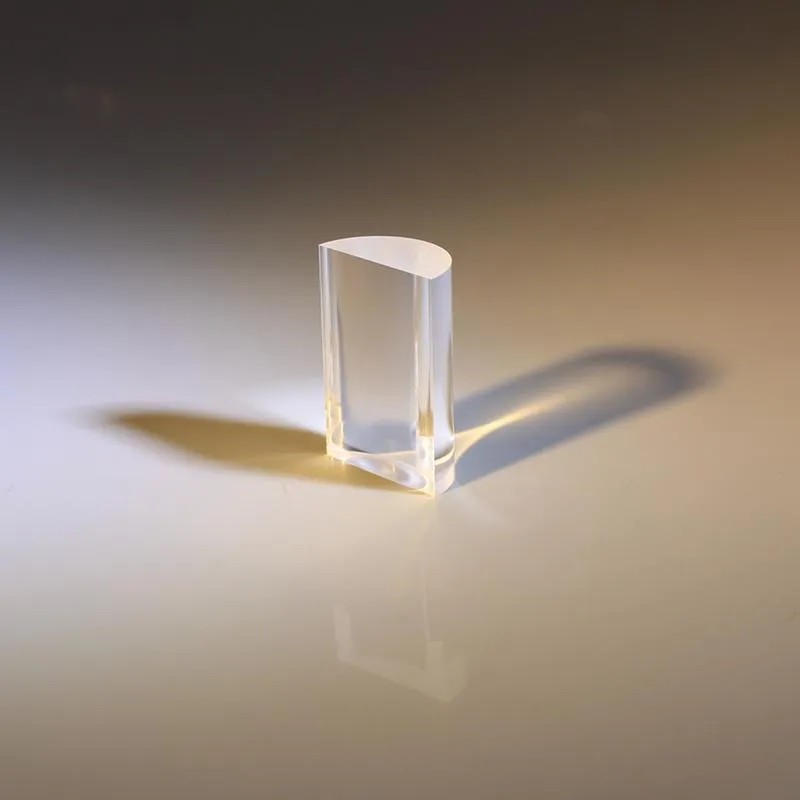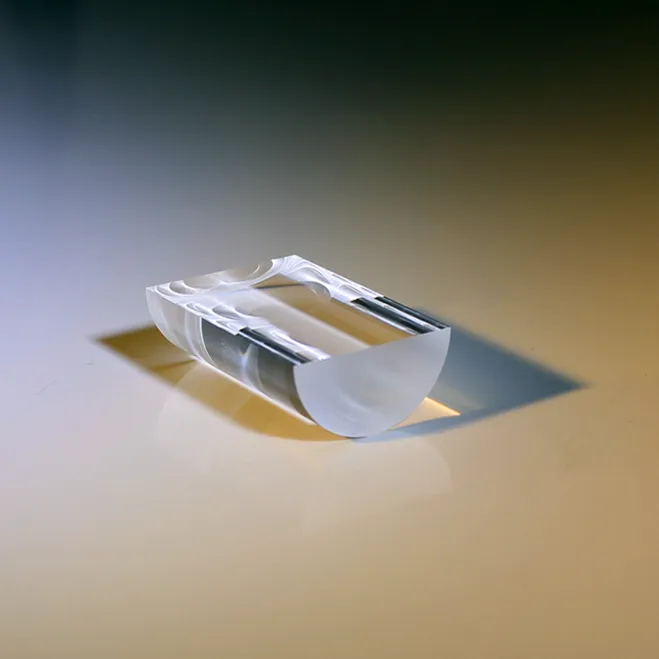Plano Convex Cylindrical Lens
Dimension: 3mm-500mm
Tolerance: +/-0.01mm
Surface Accuracy: lambda/10
Surface Quality: 10-5
Clear Aperature: 95%
Coating: AR @400-700nm, R≤0.5% or Optional
Cylinder Lenses are typically used to focus incoming light to a line, or to change the aspect ratio of an image. Cylindrical Lenses have a single cylindrical surface that causes incoming light to be focused in only a single dimension, stretching the image. Cylinder Lenses are available with positive or negative focal lengths, ideal for laser line generation or anamorphic beam shaping to circularize laser outputs.
● Plano-Concave Cylindrical lenses have a negative focal length and are used for image reduction or to spread light.
● Plano-Convex Cylindrical lenses have a positive focal length, which makes them ideal for collecting and focusing light for many imaging applications.
● Double-Convex Lenses are used in image relay applications, or for imaging objects at close conjugates.
● Double-Convex Lenses have positive focal lengths, along with two convex surfaces with equal radii. Aberrations will increase as the conjugate ratios increase. DCV Lenses are used in a range of industries or applications.

| Material | quartz glass or other optical materials |
| Dimension Tolerance | +0.0 — -0.1mm |
| Center Thickness | +/-0.1mm |
| Focal Length Tolerance | +/-1% |
| Surface Quality | 20/10 |
| Surface Figure | lambda/2 at 633nm on plano side |
| Clear Aperture | >90% |
| Chamfer | 0.25mm at 45 degree typical |
| Coating | Optional |
Most commonly used and the earliest example of an achromatic lens is the achromatic doublet. An achromatic doublet is made from a pair of glasses, of which one is typically a concave and another is convex. The concave element of the doublet is composed of flint glass (with higher dispersion); the convex element, however, is made up of crown glass (with low dispersion). These two elements are placed (cemented) next to each other in such a manner that the chromatic aberration of the one element is balanced by the chromatic aberration of another. There are various types of achromatic lenses, which differ in the type of lens elements and optical properties.

Our Ordering Process
Send us your request with detailed specifications
Receive a commercial offer with terms and costs
After your approval, we handle manufacturing, quality control, and shipping
📦 Shipping
3-5 days in EU, from 10 days to USA
💳 Payment methods
Cash, Bank Transfer, Cards (Visa, Mastercard, Amex, Discover) and PayPal
💬 Questions?
Contact us via WhatsApp, phone, live chat or email




